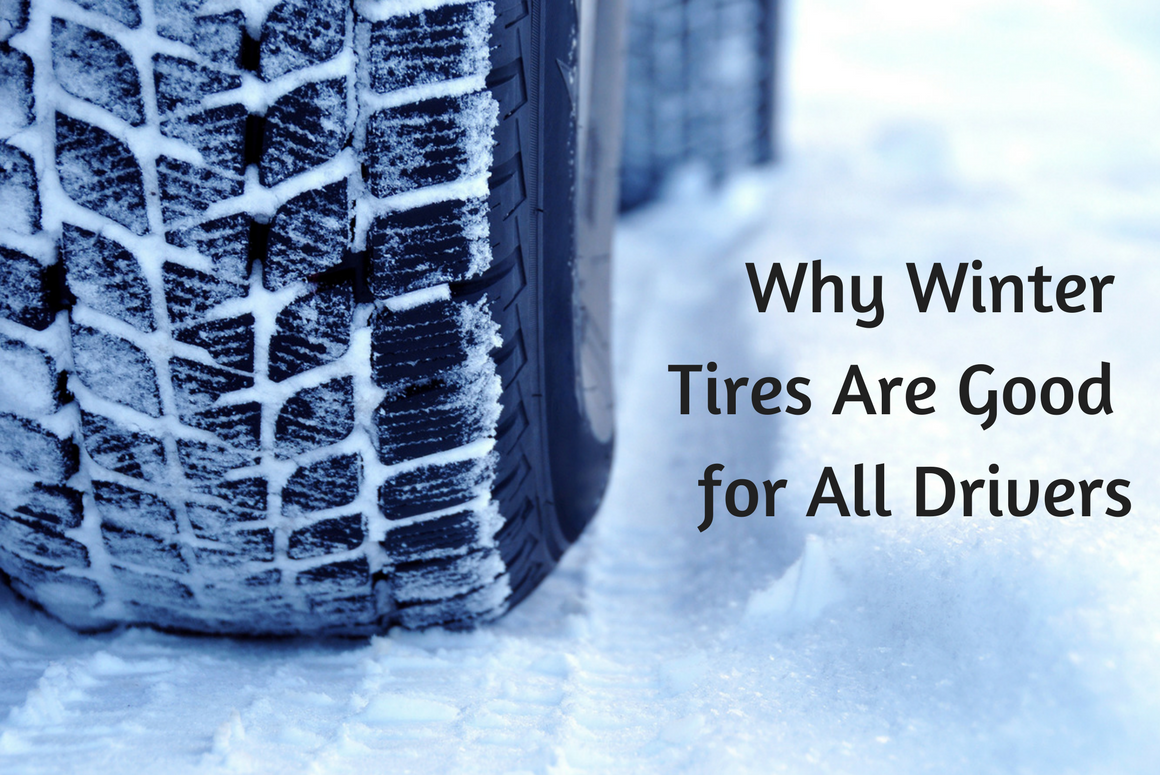Depending on where you live, winter tires might be a necessity that you’ve always lived with. However, for some regions, especially those that don’t see a ton of snow each year, winter tires can often be overlooked given their association with the more obvious winter weather. Don’t let that fool you though – winter tires can be useful in and out of the snow, and we’re going to tell you why!
The Difference Between Winter and All-Season Tires
Much like an ice hockey puck, rubber gets hard when the temperature drops (below 7C or 45F) and that means reduced grip on the road. So, if you’re using all-season or all-weather tires, this can be a shortcoming that makes your car a little less solid on the road during the winter. Winter tires are made of a rubber that not only stays a little softer in colder temperatures and has more flexibility, but they also have treads that better grip ice and snow overall.
While winter tires are peak performers in the colder months, they’re not designed to be used in the spring, summer and fall – in fact, using them on warm roads can wear them out faster than if you’re just using them in the winter, so it’s always good to swap your tires with the changing season.
Safer on Winter Roads
Whether you drive a car, truck, or SUV, winter tires have several benefits overall – from increased traction during acceleration (there’s nothing worse than wheels spinning on wet roads at a traffic light or risking sliding around a corner) and shorter stopping distances (always a bonus if there’s ice on the road!), to better stability when driving at a speed (you want to make sure that you and your family are safe on those road trips to see family over the holidays). Winter tires are designed specifically to be better in the winter weather, so there’s no compromise between them and your all-season set!
If you drive a vehicle that has all-wheel drive (AWD), winter tires can maximize its performance by giving you greater vehicle control and added stability. If you have anti-lock brakes, traction-assist, or any other safety system too, additional tire traction can enhance those features to potentially prevent slides, skids, or accidents that might otherwise happen because of poor grip on the road surface.
Wet or Dry, Ice or Snow
Whether you live in the Pacific Northwest where there’s significant rainfall throughout the winter months, the East Coast where snow and ice are commonplace as soon as October arrives, or somewhere in the middle where you can experience a bit of everything, winter tires are going to provide you with extra grip on the roads no matter what. The softness of the rubber, combined with the extra tread, means that, regardless of what Mother Nature throws at you, you’re going to be much safer – and that goes for cold, dry roads too!
Of course, there are certain winter tires that further enhance their own performance by being particularly amazing at pushing water out from the treads to maintain your grip on the road, and you can even get studded tires for super traction on hard-packed snow and ice (be sure to check on any local restrictions to using these tires before you invest in them – studded tires can cause damage to roads so you may need to find out what times of the year are OK for use, and if there are limitations to the total number of studs allowed per tire).
Stopping Power
Braking distances are often based on weather and road conditions and speed – if roads are dry, you have more time and space to brake before coming to a stop, but that time and distance drastically reduces the worse the weather is, or the faster you are going. Winter tires can bring you to a stop much faster than all-season tires in the winter months because of that added grip, which can be extremely important on roads where you have a lot less space to move – winter tires can eliminate up to 30 feet of stopping distance on snow, meaning that you have a better chance of avoiding a crash in many circumstances.
Enhanced Tire Life
If you’re swapping between two sets of tires throughout the year, you’re going to extend the life of both sets significantly. While tires, on average, should be changed between five and ten years, it all depends on how much and how far you drive. Once past the five-year mark, you should have your tires checked at least once per year by a professional, and at the ten-year mark, even if there’s no obvious sign of wear, it’s a good idea to replace your tires entirely (including spares). It’s even a good idea to check your tires monthly so that you can ensure they’re safe and ready to keep you connected to the road on any of your winter travels.
No matter where you’re going or what you’re doing this winter, make sure your vehicle has the right tires for the right environment so that you and your family are as safe as possible. Include a vehicle emergency kit (with supplies to patch your tires if necessary, of course!) and you’re set for winter driving this year!
Terms and Conditions
All content provided on this blog is for informational purposes only. The owner of this blog makes no representations as to the accuracy or completeness of any information on this site or found by following any link on this site. The owner will not be liable for any errors or omissions in this information nor for the availability of this information. The owner will not be liable for any losses, injuries, or damages from the display or use of this information. This policy is subject to change at anytime.

